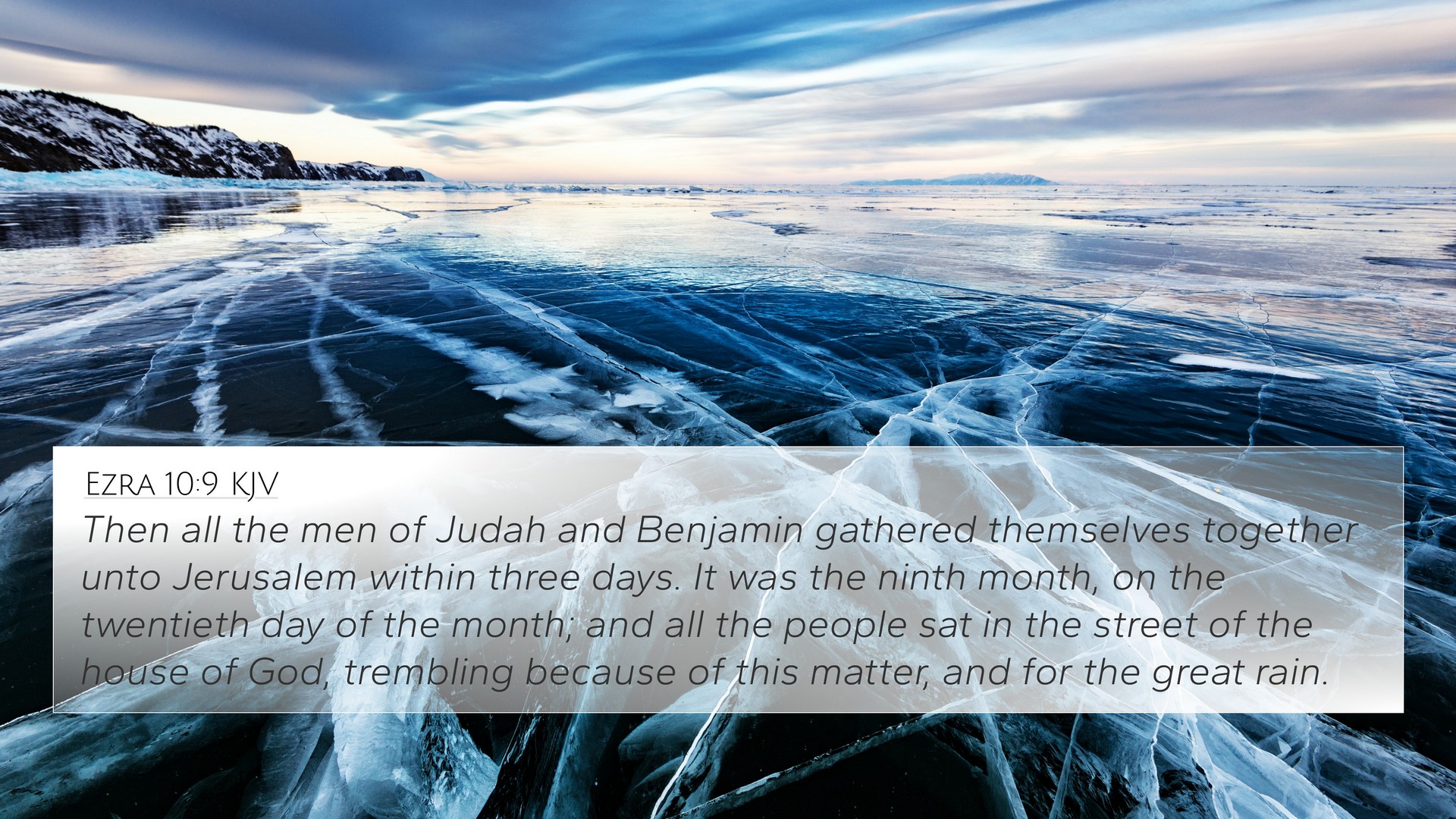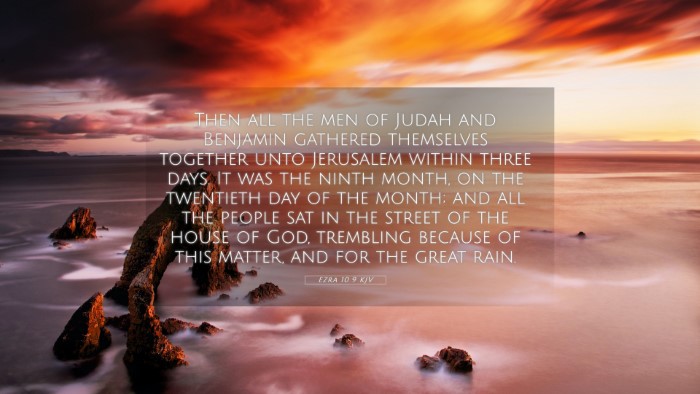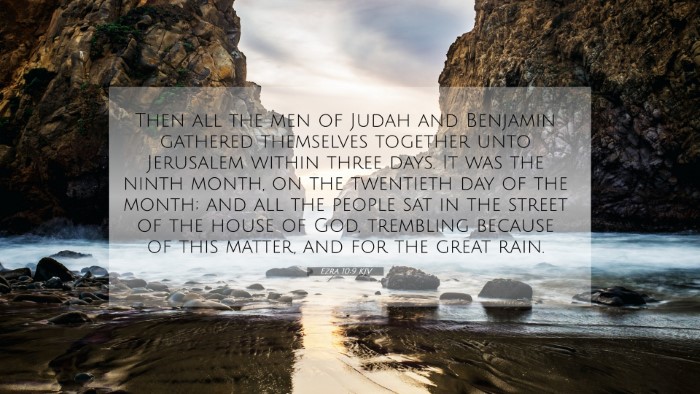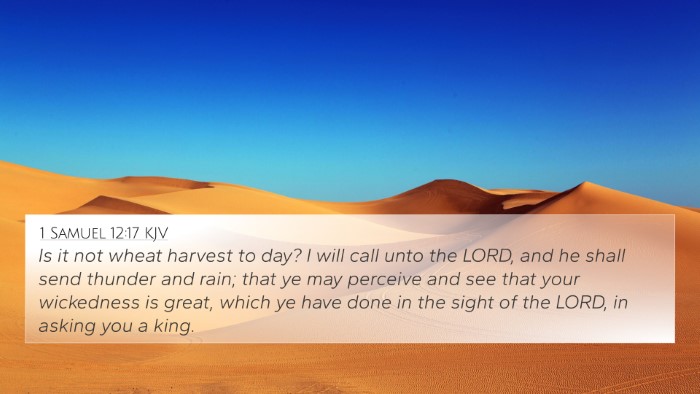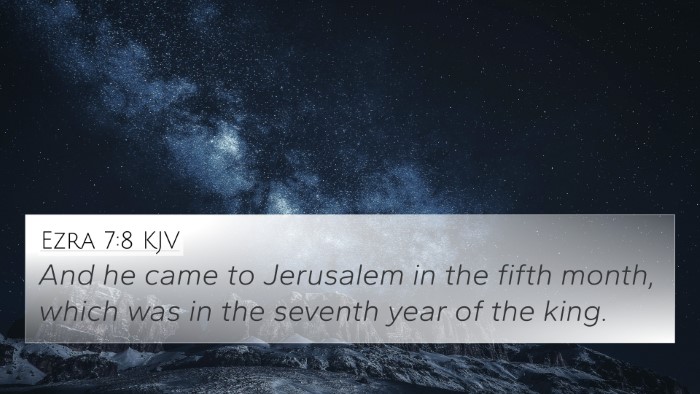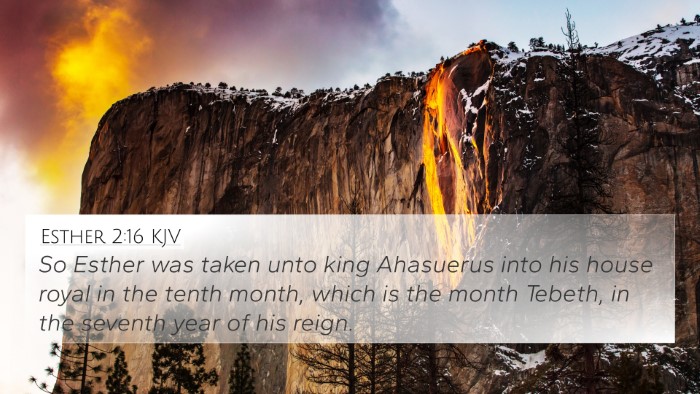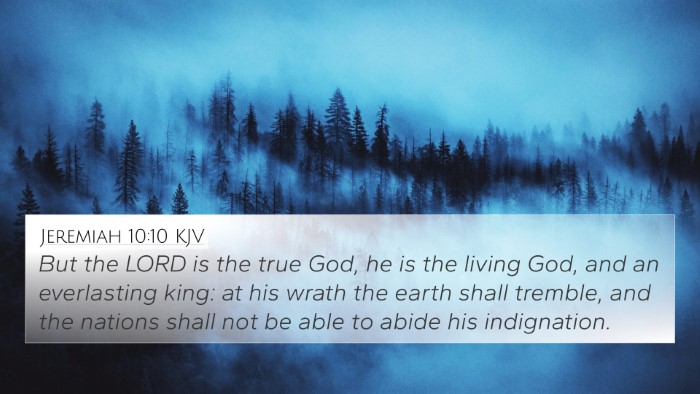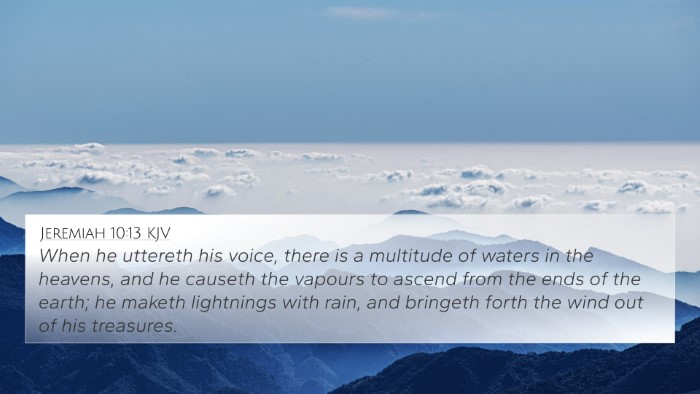Understanding Ezra 10:9
Ezra 10:9 states, "Then all the men of Judah and Benjamin gathered together at Jerusalem within the three days. It was the ninth month, and on the twentieth of the month, and all the people sat in the open square before the house of God, trembling because of this matter and because of heavy rain."
Context and Background
This verse occurs in a critical moment after the return of the Jewish exiles from Babylon. Ezra, called to lead the people in spiritual reformation, has confronted the issue of intermarriage with foreign nations which led to idolatry. The call for repentance and reform has stirred the community, illustrating their deep concern for holiness and the covenant with God.
Insights from Public Domain Commentaries
Matthew Henry's Commentary
Matthew Henry emphasizes the sense of urgency and the communal responsibility felt by the men of Judah and Benjamin. The gathering signifies not just a physical assembly but a collective acknowledgment of sin and a commitment to rectify their wrongs. The fear mentioned reflects a reverent dread of God’s judgement, especially in light of their sins. Henry points out that the public nature of their gathering demonstrates both accountability and the weight of their situation.
Albert Barnes' Notes on the Bible
Albert Barnes notes the significance of the timing of the gathering during the ninth month, aligning this moment with periods of national distress in Israel's history. The heavy rain serves as a metaphor for the overwhelming nature of their sin and the seriousness of their situation. Barnes suggests that their trembling signifies a blend of fear for God and sorrow for their transgressions, marking a pivotal point in their journey back to covenant faithfulness.
Adam Clarke's Commentary
Adam Clarke observes the emotional state of the people as they gather in the face of adversity. The rain symbolizes both physical challenges and spiritual heaviness, reflecting the tumultuous state of their hearts. Clarke highlights that their willingness to come together despite these challenges shows a profound commitment to seek God's mercy and transformative power. The gathering in front of the house of God illustrates a direct approach to seek God’s intervention.
Key Themes and Messages
- Repentance: Acknowledging sin and seeking God's forgiveness collectively.
- Community Responsibility: The importance of communal actions in response to sin.
- Fear of God: A reverent awe that leads to genuine change and transformation.
- The Role of Leadership: Ezra’s leadership in guiding the people towards reform.
- The Sovereignty of God: Trusting in God's plans despite challenges.
Bible Cross References
This verse relates to several other biblical texts that emphasize similar themes of repentance, community, and divine intervention. Below are some pertinent cross-references:
- Nehemiah 1:6-9: Nehemiah's prayerful response to the state of Jerusalem, highlighting collective confession.
- 2 Chronicles 7:14: God's call for humility and prayer among His people to heal their land.
- Daniel 9:4-19: Daniel’s prayer of confession on behalf of Israel, reflecting communal sin and the need for mercy.
- Jeremiah 29:7: The call to seek the welfare of the city, emphasizing community involvement and spiritual renewal.
- James 5:16: The importance of confessing sins to one another for healing and restoration.
- Acts 2:37-38: The response of the people during Pentecost highlighting the urgency of repentance.
- 1 John 1:9: Assurance of forgiveness upon confession of sins, reinforcing the need for honest acknowledgment of wrongs.
- Psalm 51:17: A broken spirit and contrite heart as essential in true repentance before God.
- Hosea 6:1-2: The call to return to the Lord following a period of sin.
- Zechariah 1:3: God's invitation for His people to turn to Him for restoration and forgiveness.
Application for Today
Ezra 10:9 serves as a compelling reminder for modern believers about the importance of communal repentance and accountability in our spiritual journeys. In a world filled with distractions and moral compromises, God's call remains the same: to gather together, acknowledge our shortcomings, and seek His presence earnestly. The imagery of gathering in a time of heavy rain metaphorically illustrates the storms of life we face, reminding us that in unity and earnest prayer, we can find solace in God's mercy and guidance.
Exploring the Spiritual Significance
The act of coming together in the face of difficulties, as seen in Ezra's time, reinforces the message that God values community and collective faith. It invites today's believers to explore their roots in communal worship and prayer, recognizing the strength found in fellowship. As we consider our lives, we are encouraged to engage in cross-referencing Scripture, seeking connections that deepen our understanding and relationship with God.
Conclusion
In summary, Ezra 10:9 encapsulates a moment of profound communal awareness and the desire to realign with God's covenant. By understanding this verse along with its surrounding context and related scriptures, believers can gain insight into the nature of repentance, the significance of community, and the call to draw nearer to God. The lessons from Ezra's time continue to resonate today, guiding us on how to approach our faith with diligence, reverence, and a keen sense of accountability to one another in our spiritual journeys.
